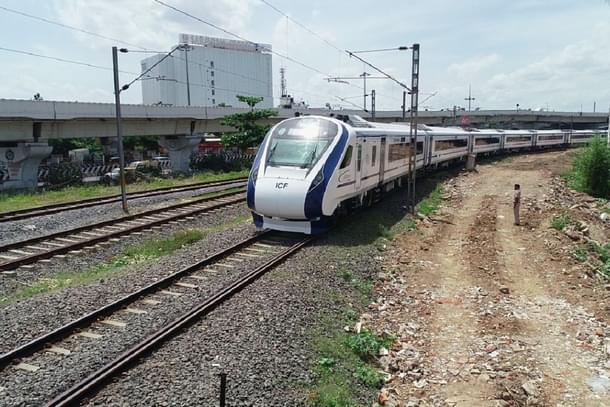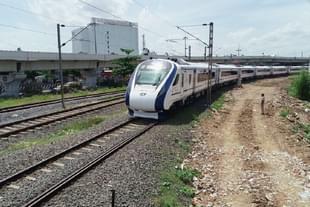Infrastructure
Railways: 211 Surveys For New Rail Lines Underway; Kavach Work In Progress To Prevent Train Accidents
Arun Kumar Das
Dec 24, 2022, 11:20 AM | Updated 11:20 AM IST
Save & read from anywhere!
Bookmark stories for easy access on any device or the Swarajya app.


Indian Railways has undertaken 211 surveys for New Lines across the country including elevated railway track/corridor having a total length of 19,307 km.
In order to strengthen accident prevention measures, the Railways has indigenously developed an automatic train protection system rechristened as ‘Kavach’ (Train Collision Avoidance System), to prevent mishaps due to human error resulting in Signal Passing at danger and over-speeding.
According to the Railways, construction of elevated railway tracks/corridors is planned on a case to case basis depending upon various factors such as site conditions, availability of land, terrain, encroachment along the alignment, density of built up area etc.
Currently all surveys for new lines including elevated railway track/corridor are in different stages of progress.
As on 1 April 2022, 183 new line projects of total length 20,937 km including elevated railway track/corridor, costing approximately Rs 4
lakh crore are in different stages of planning/sanction/execution, out of which 2,831 Km length has been commissioned and an expenditure of about Rs 1.13 lakh crore has been incurred upto March 2022.
Presently, two elevated railway corridors of Kolkata Metro are operational.
The total 15.64 km long elevated Kolkata Metro corridor including the 1.10 km long Dumdum-Belgachia, the 6.38 km long Dakshineshwar-Dumdum, the 8.16 km long Mahanayak Uttam Kumar-Kavi Subhas part of the North-South Corridor is operational.
Besides, the 5.80 km long East West Corridor starting from Salt Lake Sec V to Salt Lake Stadium is also operational now.
All possible steps, including development of indigenous equipment, are being undertaken by the Indian Railways on a continuous basis to prevent train accidents.
Keeping in view the complexities involved in train collision avoidance system implementation, which require all rolling stock, wayside stations and track to be equipped with ‘Kavach’, it has been decided to implement ‘Kavach’ in a phased manner.
So far, ‘Kavach’ has been deployed for 1,455 route kms on South Central Railway with 77 locomotives.
Currently, ‘Kavach’ work is in progress on a 3,000 km route including Delhi-Mumbai and Delhi–Howrah corridors.
Other benefits of ‘Kavach’ include controlling speed of trains by automatic application of brakes on approach of turnouts, repeating of signal aspects in cab, which is useful for higher speeds and foggy weathers, and auto whistling at level crossing gates.
At present ‘Kavach’ is being implemented on Indian Railways in a phased manner. Further, ‘Kavach’ does have export potential in future.
Also Read: 1,127 Derailments During 2017-21, Poor Maintenance Of Tracks Major Cause: CAG Report
Arun Kumar Das is a senior journalist covering railways. He can be contacted at akdas2005@gmail.com.




